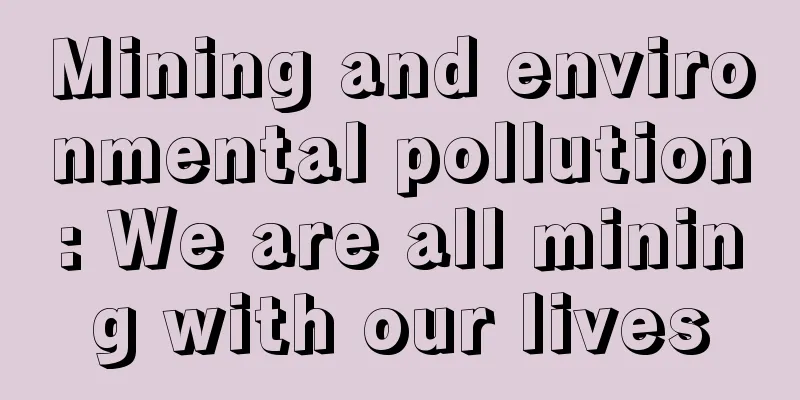Mining and environmental pollution: We are all mining with our lives

|
Bitcoin mining and environmental pollution are problems that have always existed but have not been solved, because the two complement each other. The rapid development of the cryptocurrency industry is bound to have various impacts on the environment. As we all know, the generation of new bitcoins is achieved through mining. Due to the proof-of-work mechanism of Bitcoin, mining means that miners can obtain a stable source of income. Therefore, people always selectively avoid the seriousness of mining machines consuming a lot of energy. In fact, most mining facilities in the Bitcoin network are located in areas that rely heavily on coal-fired power, which means that mining is accompanied by an increase in carbon emissions. Bitcoin mining produces as much carbon emissions as the entire city of Kansas City, or even as much as a small country, according to a study published June 12 in Joule Magazine. Christian Stoll, one of the researchers involved in the project, said that the huge energy consumption generated by mining translates into a significant carbon footprint. In addition, the research pointed out that the computing power required to solve Bitcoin puzzles has more than tripled since last year, causing the carbon emission problem to become worse. The scale of these emissions also provides an important rationale for regulatory intervention, and may even accelerate the pace of regulation currently being implemented by countries. The report estimates that Bitcoin produces between 22 and 22.9 megatonnes of carbon dioxide emissions per year, which by international standards puts Bitcoin mining emissions between Jordan and Sri Lanka. If other cryptocurrencies are taken into account, this level would double. Last November, a study looking at the period between January 2016 and June 2018 found that it takes four times as much energy to mine $1 of Bitcoin as it does to mine $1 of copper, and twice as much as it does to mine $1 of gold or platinum. If that doesn’t give you an idea of how much energy the Bitcoin network consumes, compare it to other payment systems like VISA, which according to VISA consumes a total of 674,922 gigajoules of energy for all its operations worldwide. This means that VISA’s energy needs are equivalent to the energy needs of approximately 17,000 US households. VISA processed 111.2 billion transactions in 2017. Using these numbers, we can compare the two networks and show that Bitcoin is much more energy intensive per transaction than VISA (note that the figure below compares a single Bitcoin transaction to 100,000 VISA transactions). Such a huge amount of energy consumption indicates that the mining cost is high, so Bitcoin miners have been looking for cheaper electricity areas, and renewable energy can bring them lower mining costs. As we all know, China is rich in coal resources. If the proportion of renewable energy in China increases, it will have a greater impact on the Bitcoin mining industry. Research shows that China will achieve renewable energy electricity production costs lower than fossil fuels in 2021. This means that by 2021, more miners will join Chinese mines. But a PwC report in March warned that renewable energy is not enough to solve Bitcoin's sustainability problem. We also know that carbon emissions are an important factor affecting global warming. If the energy consumption and environmental pollution caused by mining cannot be improved, it may pose a threat to global ecological stability. While science and technology and the economy are developing rapidly, we must also take into account the sustainable development of the human ecological environment. |
<<: Let’s get to the bottom of it. Is PoS really better than PoW?
>>: How to respond to global digital currency regulatory trends?
Recommend
HaoBTC Bitcoin Daily Interpretation: Breaking through support, looking for the bottom
Fundamental news : 1. Columnist Xiao Lei: Why is ...
What does a heartless person look like?
In relationships, what people fear most is meetin...
What does a mole on the left corner of the eye mean?
Some people have many moles on their faces, while...
Ethereum merger is imminent. Let's talk about PoW and PoS from the perspective of community thinking
As Vitalik said, the Ethereum merge is expected t...
What to do if there are horizontal lines on the root of the nose
The root of the nose is the foundation of the mou...
What kind of ears are good? You can tell that you will have a happy old age at a glance
In physiognomy, people's ears are in charge o...
What does a mole on the neck mean?
Moles grow in all places, what does it mean if it...
The demise of retail crypto investors: On-chain migration is ongoing
VCs and market makers are the main front-end barr...
What does the upturned corner of the eye mean? Analysis of the upturned corner of the eye
It is often said that when you look at a person, ...
The most daring central bank blockchain experiment: The Netherlands wants to reshape financial market infrastructure
The Dutch central bank is preparing an ambitious ...
[Update] Grayscale once again increased its holdings by 1,172 Bitcoins and 29,019 Litecoins
Recently, Grayscale's holdings have attracted...
Rich women have these three features. Look at the features of rich women.
A woman with thick ears and earlobes is rich. Wom...
Uncovering the future trend of crypto ETFs
Remember the excitement when the first Bitcoin ET...
Your index finger shows your love fortune
Everyone wants someone who loves them, no matter ...
How to observe facial complexion to understand changes in fortune
The complexion appears in different places on the...









